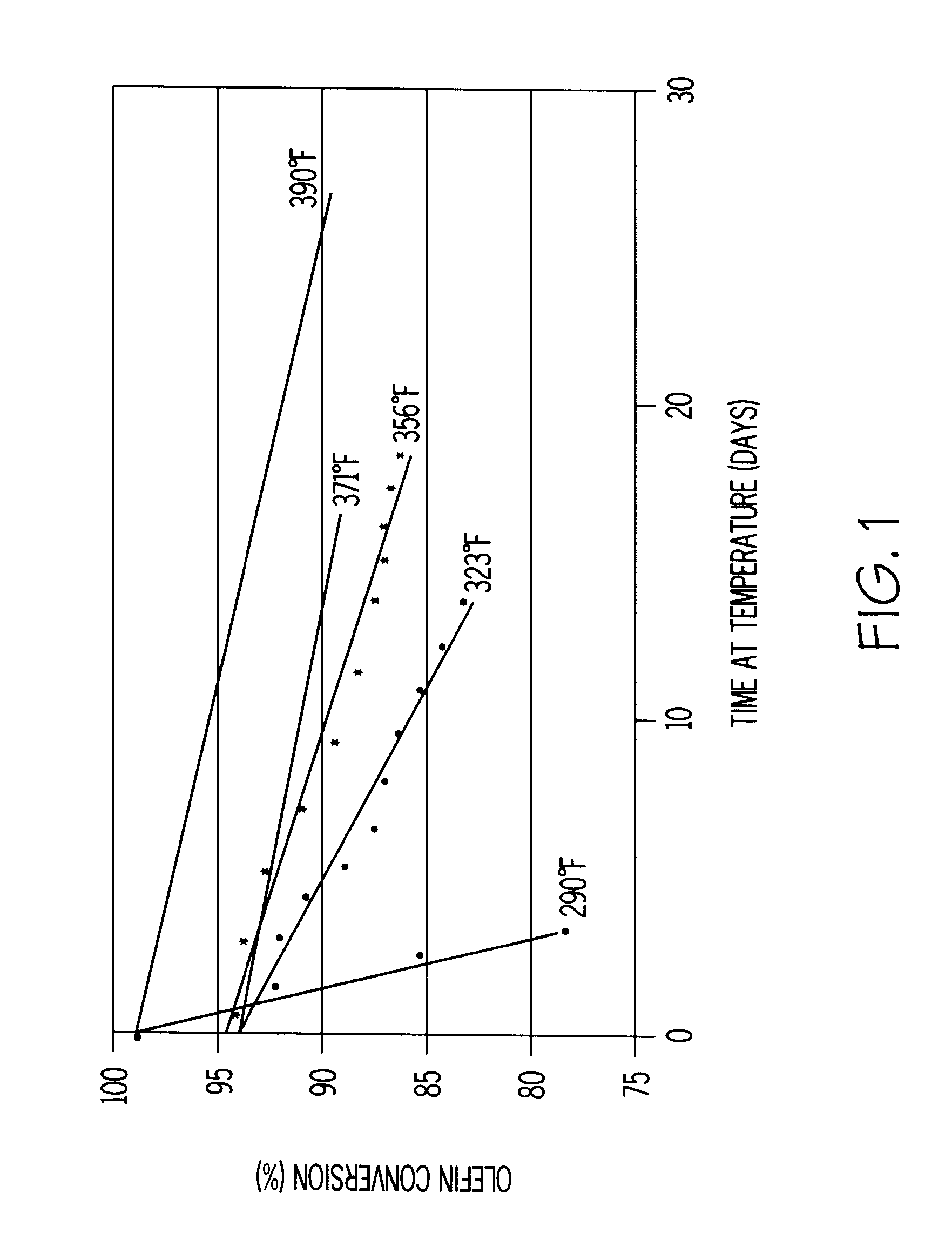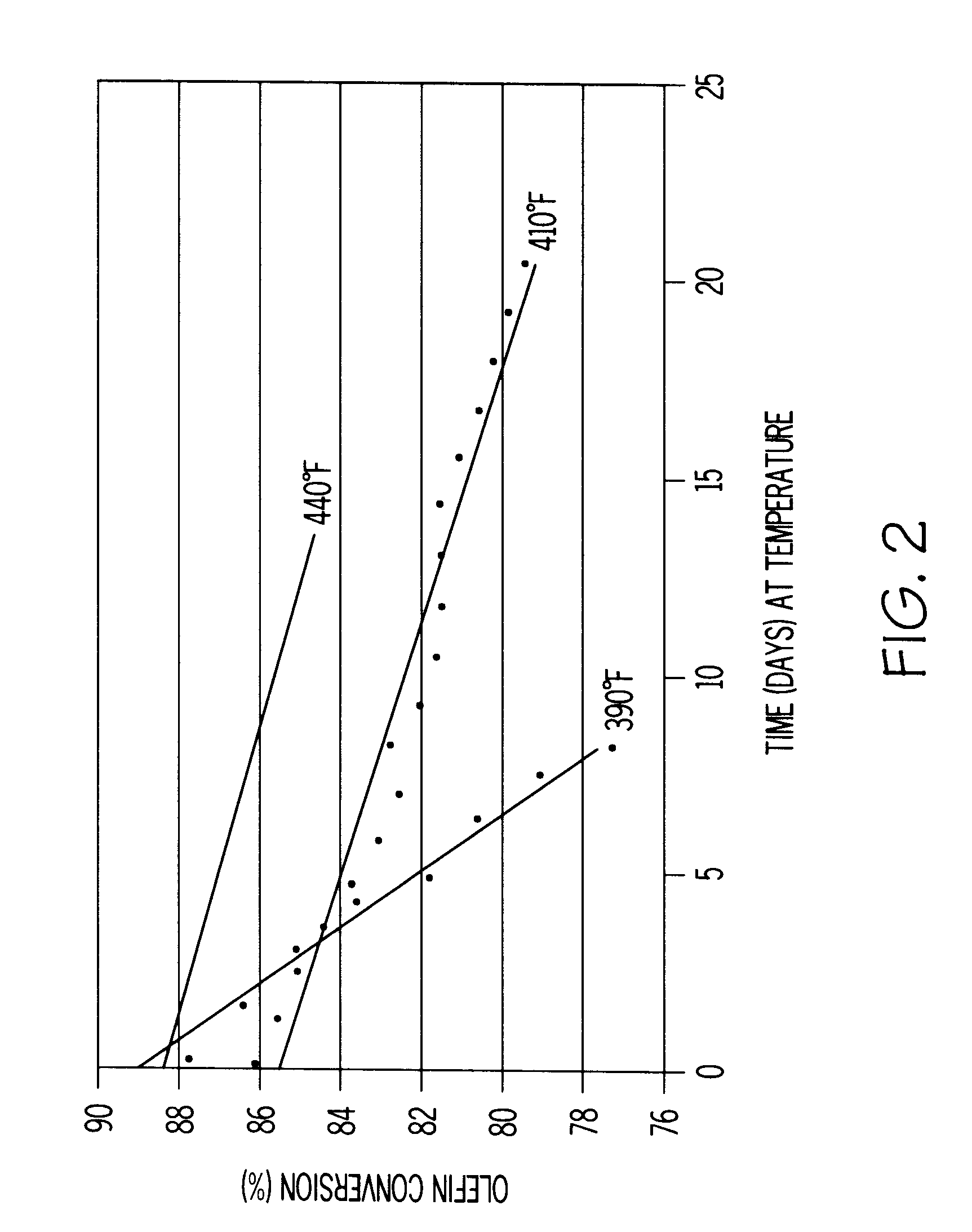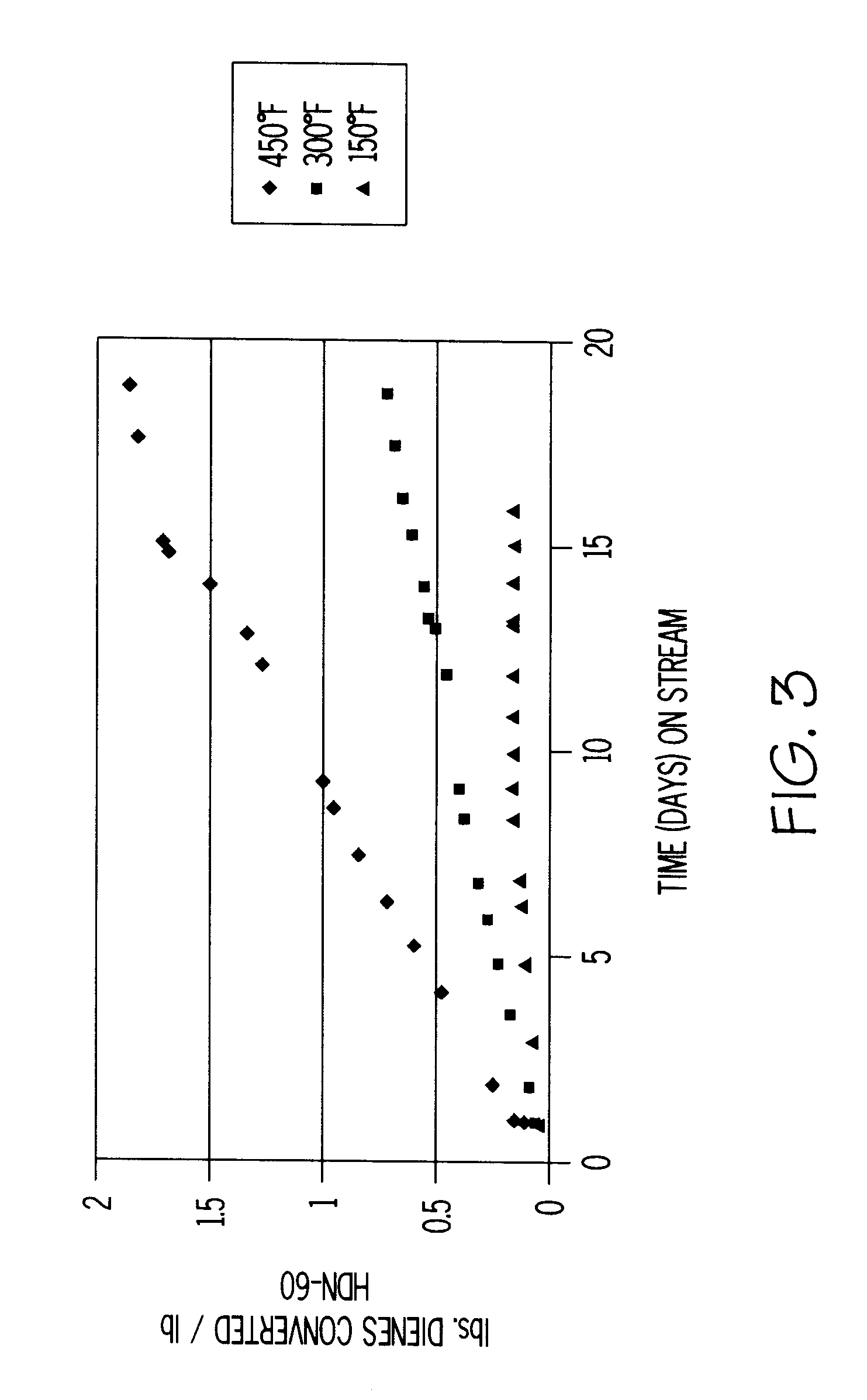Process for BTX purification
a technology of btx and purification process, which is applied in naphtha reforming, naphtha treatment, organic chemistry, etc., can solve the problems of unsatisfactory side reactions, unfavorable olefinic materials, and substantial increase of bromine reactive contaminants in the reformate derived stream
- Summary
- Abstract
- Description
- Claims
- Application Information
AI Technical Summary
Benefits of technology
Problems solved by technology
Method used
Image
Examples
example 2
A heavy reformate with a BI of 550 was used as a feedstock. The heavy reformate was a C.sub.7.sup.+ cut of full-range CCR reformate containing 50 wt % toluene, 37 wt % C.sub.8 aromatics, 12 wt % C.sub.9.sup.+ aromatics, and 0.27 wt % olefins. No dienes were detected in this feed using standard GC analysis. This feedstock was processed at 52 WHSV over self-bound MCM-22 at 390, 410 and 440.degree. F. FIG. 2 shows the aging rate of the self-bound MCM-22 (i.e., SB MCM-22) as a plot of olefin conversion versus days on stream for each temperature. FIG. 2 shows that as the operating temperature is raised, the olefin conversion increases.
example 3
A light aromatics extract containing 61 wt % benzene and 37 wt % toluene was used as the feedstock for this example. The feedstock contains both olefins and dienes in amounts that can be monitored using a gas chromatograph. The feedstock had a BI of about 80 and contained about 10 ppm of cyclopentadiene, 110 ppm of mixed methylcyclopentadienes, and 125 ppm of olefins. The light aromatics extract was contacted with a HDN-60 hydrotreating catalyst, sized to 60 / 200 mesh, at 18 WHSV, 150.degree. F., 18 WHSV, 300.degree. F. and 48 WHSV, 450.degree. F. and 350 psig. Gas chromatograph analysis showed that for each run only the diene peaks underwent significant conversion. This demonstrated that HDN-60 has excellent selectivity for diene versus olefin conversion.
At the beginning of the 300 and 450.degree. F. runs, diene conversion was complete. FIG. 3 shows total pounds of dienes converted per pound of catalyst versus time (in days) on stream for each run. The curves for this type of plot a...
example 4
The same light aromatics extract used in Example 3 was used in this example. The light aromatics extract was run through a bed of self-bound MCM-22 catalyst at 40 WHSV, 450.degree. F. and 350 psig. Once each week the feedstock flow rate was increased to achieve 100 WHSV and partial olefin conversion. Olefin conversion versus days on stream is plotted in FIG. 4.
PUM
| Property | Measurement | Unit |
|---|---|---|
| pressure | aaaaa | aaaaa |
| temperature | aaaaa | aaaaa |
| pressure | aaaaa | aaaaa |
Abstract
Description
Claims
Application Information
 Login to View More
Login to View More - R&D
- Intellectual Property
- Life Sciences
- Materials
- Tech Scout
- Unparalleled Data Quality
- Higher Quality Content
- 60% Fewer Hallucinations
Browse by: Latest US Patents, China's latest patents, Technical Efficacy Thesaurus, Application Domain, Technology Topic, Popular Technical Reports.
© 2025 PatSnap. All rights reserved.Legal|Privacy policy|Modern Slavery Act Transparency Statement|Sitemap|About US| Contact US: help@patsnap.com



